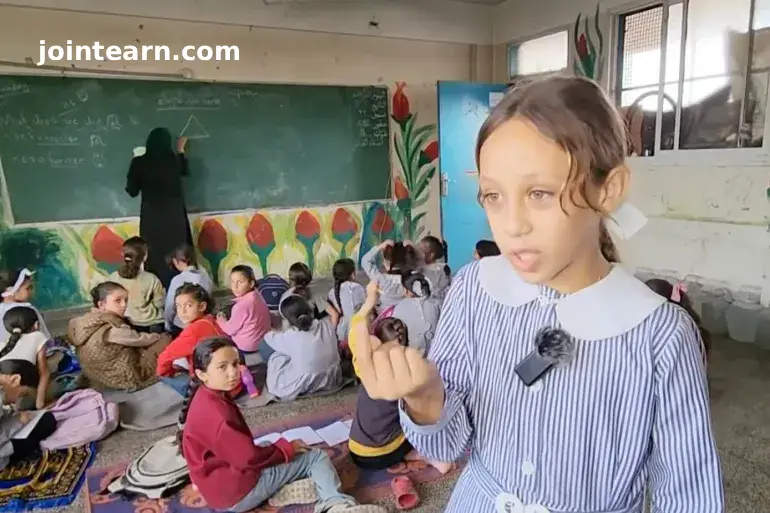
UNRWA Schools in Gaza Struggle to Reopen Amid Ongoing Crisis
In the heart of Gaza, where the echoes of war still reverberate through shattered neighborhoods, schools run by the UN Relief and Works Agency (UNRWA) are slowly reopening. These buildings, once centers of learning and hope, now serve a dual purpose: classrooms by day and displacement shelters by night.
Following the U.S.-brokered ceasefire in October 2025, UNRWA has been working to restore a semblance of normalcy for the region’s children — many of whom have not seen a proper classroom in more than two years.
Yet, with 97 percent of Gaza’s schools damaged or destroyed, the path to education remains fraught with challenges.
300,000 Children Deprived of Education Since 2023
Since Israel’s war on Gaza began in October 2023, over 300,000 Palestinian students have been cut off from formal education.
According to UNRWA, ongoing Israeli bombardments, infrastructure damage, and restrictions on aid have created near-impossible conditions for teaching and learning.
UNRWA spokesperson Enas Hamdan said the agency is “striving to restore education through temporary safe learning spaces for more than 62,000 students across the Gaza Strip.”
“We are working to expand these activities across 67 sheltering schools while continuing online learning for 300,000 displaced children,” Hamdan explained.
Desks Replaced with Mattresses as Students Return
In Gaza’s central city of Deir el-Balah, families live in crowded classrooms that have been converted into temporary homes. During the day, children push mattresses aside to make space for makeshift lessons.
Ten-year-old Inam al-Maghari is among those returning to class for the first time in two years.
“I didn’t complete my second and third grades. Now I’m in fourth, but I feel like I know nothing,” she told Al Jazeera. “We brought mattresses instead of desks to sit and study.”
Her words echo the struggles of tens of thousands of children who are trying to reclaim their education despite the devastation surrounding them.
Families Sacrifice Shelter Space to Prioritize Learning
For many displaced Palestinians, classrooms have become shared spaces of survival and resilience.
Um Mahmoud, a mother of four, said her family leaves the classroom three times a week so that lessons can continue.
“We vacate the room to give the children a chance to learn,” she said. “Education is vital — it’s the only hope left for our children.”
Even in overcrowded shelters, communities are finding ways to ensure children continue learning — a testament to Gaza’s enduring spirit.
The Psychological Toll: Children Living Through Trauma
The war’s impact on Gaza’s youth extends far beyond the classroom. Psychologists warn that over 80 percent of Gaza’s children show symptoms of severe trauma — including anxiety, nightmares, and loss of concentration.
The UN children’s agency (UNICEF) estimates that more than 64,000 children have been killed or injured since the war began.
UNICEF’s regional director for the Middle East and North Africa, Edouard Beigbeder, described the situation as “an unprecedented humanitarian and psychological crisis.”
“One million children have endured the daily horrors of surviving in the world’s most dangerous place to be a child,” Beigbeder said. “They are left with wounds of fear, loss, and grief.”
Learning Amid Rubble: A Fight for the Future
In Gaza today, education is an act of defiance. Teachers continue lessons inside damaged classrooms, surrounded by cracked walls and debris. Despite the lack of electricity, internet access, and supplies, lessons in reading, writing, and arithmetic carry on.
“Even if it’s only for an hour a day, these classes help the children heal,” said one volunteer teacher in Deir el-Balah. “It reminds them they still have a future.”
International Aid and Hope for Reconstruction
UNRWA, supported by UNICEF and other humanitarian agencies, has called for urgent funding to rebuild Gaza’s education infrastructure. The agency estimates that hundreds of millions of dollars are needed to reconstruct schools and provide essential learning materials.
While international aid has begun trickling in, ongoing restrictions and security concerns continue to slow progress. Humanitarian officials warn that without sustained support, an entire generation of Palestinian children could be lost to the cycle of conflict and displacement.
Key Facts: Gaza’s Education Crisis (2023–2025)
- Students affected: 300,000+
- Schools damaged or destroyed: 97% of UNRWA facilities
- Students receiving temporary education: 62,000
- Children killed or injured: 64,000+ (UNICEF estimate)
- Sheltering schools: 67 across the Gaza Strip
- Ceasefire brokered by: United States, October 2025
Conclusion: Learning as Resistance in Gaza
In Gaza’s battered classrooms, amid the rubble and heartbreak, education has become a form of resistance. For thousands of children who have lost homes, friends, and years of learning, returning to class — even for a few hours — represents a fragile hope for the future.
As one teacher put it:
“When we teach, we are rebuilding Gaza — one child, one lesson at a time.”


Leave a Reply